Looking Up, 16-page English PDF Edition, Back Issues and Current Issue
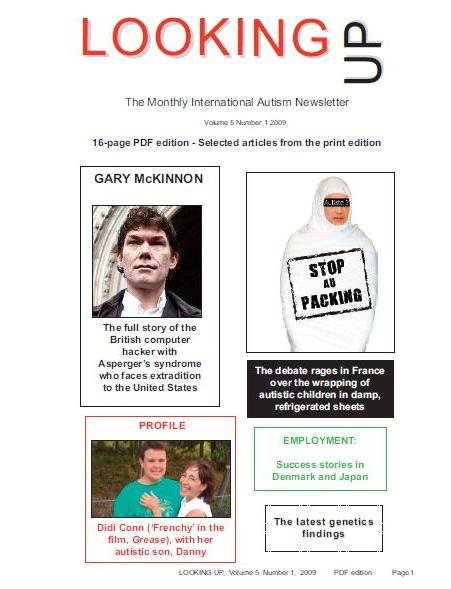
|
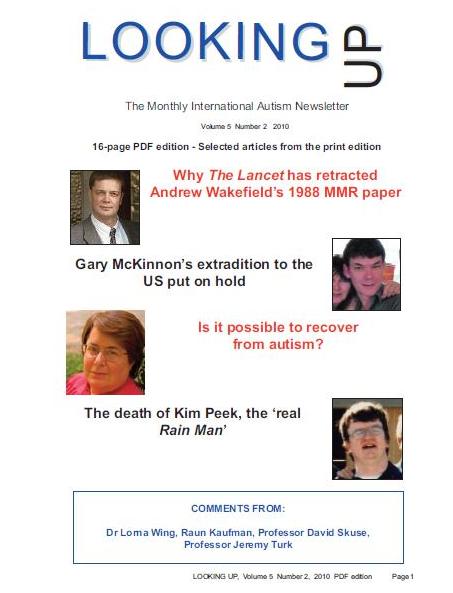
|
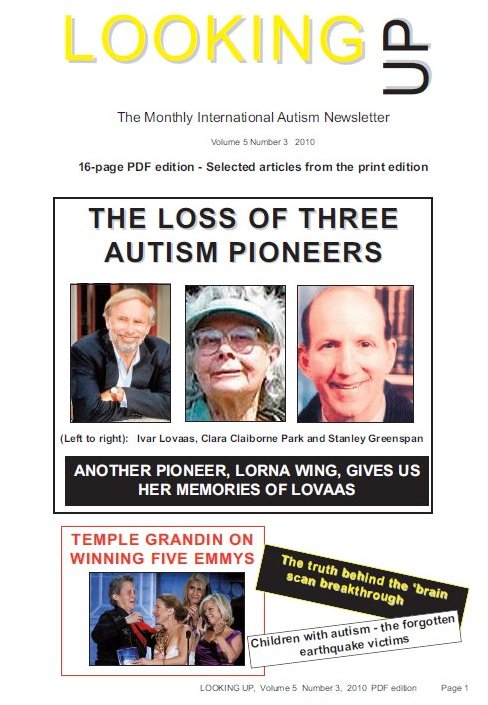
|
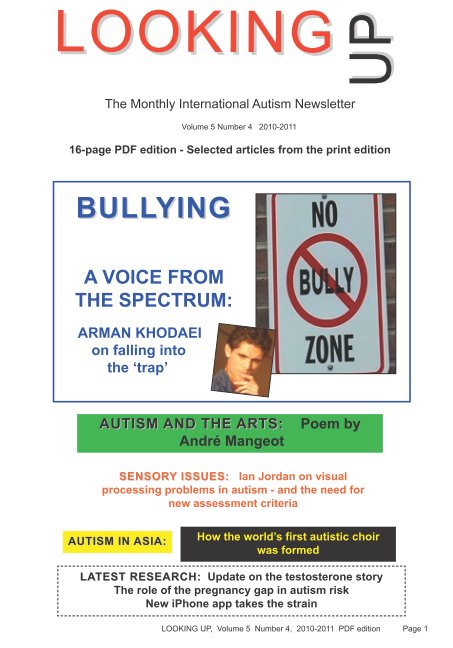
|
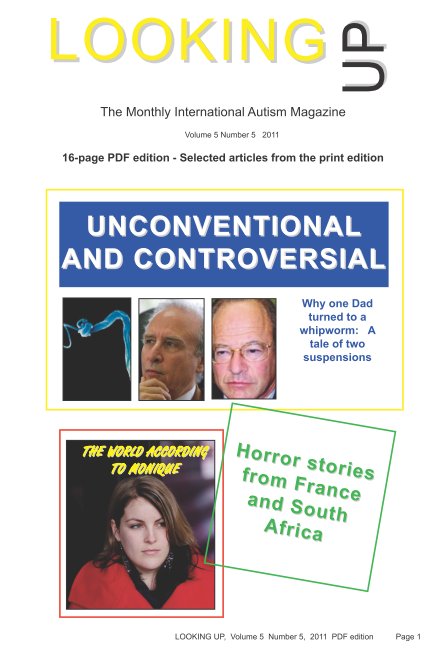
|
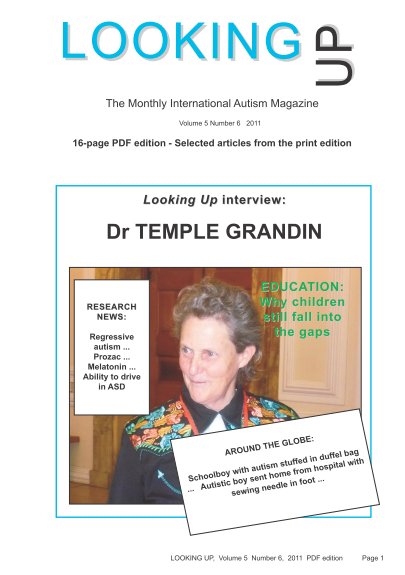
|
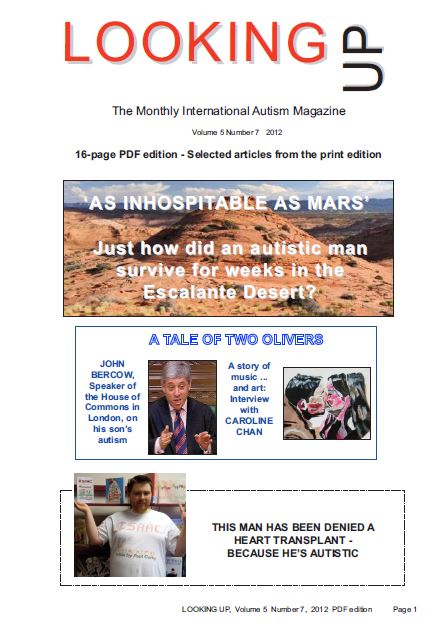
|
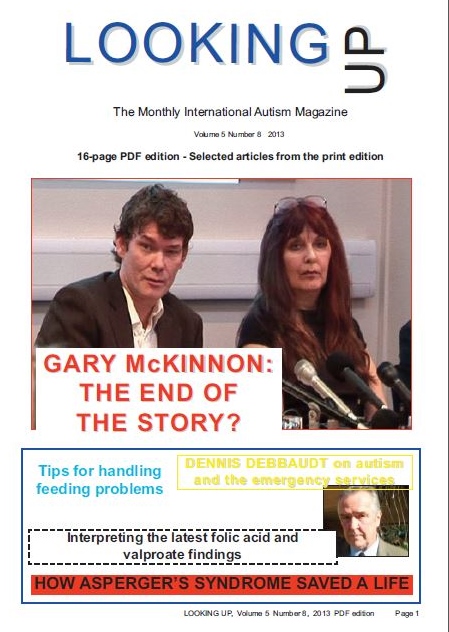
|
| Home page | Subscribe (print edition) | Selected articles | Our publications | Our mailing lists |
| PDF edition | Subscribe (PDF edition) | Back issue contents | Autism books | Contact us |
From Volume 3 Number 1
ADAM
FEINSTEIN, Editor of LOOKING UP, reports on an exciting visit he made
to a
remarkable centre for adults with autism near Gerona, in north-eastern
Spain,
and a major conference in Barcelona devoted to biomedical and
educational
approaches to autism
I RECENTLY returned to London from a few fascinating and illuminating days in Barcelona.
Quite apart from the fact that it is one of my favourite cities, I had the chance to visit a remarkable centre for adults with autism and to attend a major international conference dedicated largely to biomedical approaches to autism, but also with important contributions on educational methods from, among others, Dr Eric Schopler, the founder of the TEACCH method in North Carolina.
First things first - the visit to the adult autism centre. Mas Casadevall is situated about 70 miles from Barcelona, heading north towards the French border, and just a couple of miles from Banyoles. The setting is stunning, In the distance rise the Pyrenees, there are other, smaller rolling hills nearby and not far away is Figueras, birthplace of the surrealist painter, Salvador Dalí. Wild boar have been seen coming right down next to the main building - they’ve learned that this is one place they are unlikely to be shot! I was driven there by a charming man, Manel Ventura, whose 30-year-old son, Pere, lives at the centre and is both autistic and blind. (His other child, a daughter is her twenties, is also blind, with some behavioural problems of her own, though nowhere near as serious - he thinks she may have obsessive-compulsive disorder.)
Mas Casadevall is an admirable enterprise. It was set up in 1987, on the initiative of a group of parents horrified at how little care as available in Cataluña - or any other area of Spain for that matter - for adults with autism.
At the moment, there are 18 adults with low-functioning autism living at the centre, with another eight coming in during the day. It is open 365 days a year.
The first thing we did was to eat in the atmospheric, wooden-beamed restaurant. The excellent food was served by an autistic waiter, Antonio, a man with a broad grin and even broader-rimmed glasses. He was actually born in Brussels, but his parents moved to Cataluña andhe speaks both Castilian and Catalan - but with the same halting delivery. When he was told I was English, he even tried a few words of that. Very impressive.
But by no means all the residents at the centre can speak. (It is an odd thing. I have long been fascinated by the basic language deficits in autism. My son, Johnny, acquired basic language, and then lost it at around two-and-a-half. He is now non-verbal. The other day, the autism expert, Dr Uta Frith, gave me her own very personal theory in London about why some autistic children so mysteriously lose all the language they once used. Frith speculates that most children start off using language simply to label objects, But then, she says, at around two years old or so, most neurotypical kids “discard” this first “language system” in favour of a second, more sophisticated system. Her theory is that children with autism might discard the old system without acquiring the new one. So, like my son, Johnny, they are left with no language at all, where before they had at least a limited, basic, “non-social” vocabulary.) And yet, and yet ... I have met quite a few autistic children who are, like Antonio, bilingual or even multi-lingual.
Where was I? In the restaurant, eating ... eating wild boar, or jabalí, actually - the first time I’d done that since a trip to Poland many, many years ago. I was assured that, unlike most of the food eaten at Mas Casadevall, this boar was not local, but had been bought in from outside. (Just before I leave this restaurant for good, I should add that it has enjoyed some very high-profile visitors. At the time of the 1992 Barcelona Olympic Games, the Olympic flame happened to be passing through on the way to the stadium, and with it came Jordi Pujol, the Catalan President. He sat down to eat at the Mas Casadevall restaurant, but one of the women in the kitchen, also autistic, refused to work. Pujol’s wife went up to the woman’s room to try and persuade her to return. In vain.)
I was shown round the workshops, where the residents make paper, beautiful ceramics and candles. They are not just for show, either: the autistic residents take part in the Banyoles market every week, selling their products. There’s also a shop open to all at the centre itself, and professional artists turn up to buy the paper made here.
During my visit, one man came up to me, grabbed my hands with a friendly, entreating smile, and started labelling objects frenetically. He pointed to a photograph and said “perro” (dog), then pointed to a football on top of a cupboard and said “pelota” (ball). I was impressed by the fact that he could point in this way, socially, to share attention - unusual in people with autism, especially as as he hadn’t, I found out, been specifically taught to do so. That was very promising. Of course, others appeared to be making less progress and were clearly severely impaired. It was touchingly ironic that, at exactly the same time as I was meeting Manel Ventura’s blind, essentially non-verbal son, Pere, sitting silently on sofa, one of the world’s more successful blind men, David Blunkett, the British Home Secretary, was lecturing on terrorism to an audience of thousands in Madrid.
Manel has been through a lot in his life. He has had to help Pedro through a serious operation and now visits Mas Casadevall every two weeks to take his son out. He believes that, since his other child was also born blind, there could be something in the research by Patricia Rodier of the University of Rochester in the United States - extrapolating from an originalSwedish Thalidomide study - according to which the damage to some children with autism could occur very early in the mother’s pregnancy. Manel told me he believed there could be a direct link between autism and blindness. “Who knows? The problems Rodier mentions could manifest themselves in many different ways.”
There is still no structured educational programme at Mas Casadevall. They use some elements of TEACCH, but not in a specific way. That, it seems, is quite a way off.
The director of Mas Casadevall is Francesc Pelach i Busom. By his own admission, he was educated in the psychoanalytical tradition. The latest issue of the glossy quarterly magazine of the centre, L’aixada, reprinted an editorial of mine from LOOKING UP, in which I had described the successful fight to overturn a terrible definition in the 2001 edition of the Rizzoli-Larousse encyclopedia in Italia still blaming parents for bringing on their offspring’s autistic symptoms. Alongside my editorial, L’aixada ran an article by Pelach in which he wrote: “In the light of the research and and experience which has now been accumulated, it is no longer possible to maintain the view that the mother is guilty of causing her child’s autism.”
So Pelach does now accept that autism is a neurological disorder - and from the time I spent with him, it was clear to me that he cares deeply about the residents in his care.
It was only as I was getting into the car to return to Barcelona for the conference that I noticed the full title of the organisation which runs the centre: the Foundation of Parents of Psychotics and Autistics. There’s clearly some work still to be done here.
In general, though, what has happened in autism research over the past 30 years or so has been a dramatic shift away from the psychoanalytical model of autism to the biomedical model, towards the extreme view that autism is a specific disease. We heard all of this at the Barcelona congress, which was, after all, organised by the Great Plains Laboratory in Kansas that conducts batteries of biological tests on children with autism. But we also heard a lot of other things at what was a very entertaining event, apart from anything else, because it provided a mixture of biochemical theories and the more established educational approaches.
Juan Martos is head of the Leo Kanner Centre in Madrid and probably knows as much about autism as anyone in Spain. Paying tribute (as so many others did) to the late Spanish autism authority, Dr Angel Rivière - who, until his death in April 2000, was a hero in the Spanish-speaking world - Martos told the conference: “It is important to remember that the best tool to produce improvements in autistic children is educational intervention.” He said: “We have to negotiate with autistic children, we have to build bridges, we must gradually create processes to engage a child, to stop him rocking or hand-flapping.” And then, in what I believe is one of the areas in which TEACCH - espoused by Martos - essentially differs from Lovaas, Martos added: “It is fundamental to adapt the surroundings to fit the child with autism, and not the other way round.”
Martos told me: “We all use behavioural techniques. And there are some elements of Lovaas which make sense. But Lovaas is too verbal, and it is used so rigidly and inflexibly.”
One of the leading proponents and exponents of the Lovaas method in Spain, Dr Asún Puche, elicited gasps of disbelief from the “biomedical modellers” in the audience when she declared: “Autism is a hypothesis - as such, it doesn’t exist. I don’t treat autism.”
What she meant, as she explained to me later, was that she was dealing with specific behavioural manifestations, not one clearly defined condition - and as such, she is rightly reflecting autism’s complexities. And having praised Juan Martos, the TEACCH proponent, I must point out that I know of many parents whose autistic children have also made great strides through the Lovaas method or Applied Behavioural Analysis. What I cannot accept is those who maintain that any one method - whether it be TEACCH, Lovaas, a gluten- and casein-free diet, secretin, the Delacato method, whatever - is the only successful one for such a tremendously complex condition as autism. I put this point to Puche, to which she responded: "Well, I looked and looked and looked, and all I can say is that the Lovaas programme was the one which convinced me. But I would never, ever, turn around to parents if they left the programme and say to them: ‘Your child’s had it. He’ll never get anywhere now.’ No way. But for me, Lovaas is the best method, and the research shows it.”
There were always likely to be a few sparks flying when you had both a top Lovaas practitioner and the inventor of a “rival” TEACCH method - Dr Eric Schopler - in the same room. Though to be fair, neither Puche nor Schopler wanted to engage in polemics. That was left to Isabel Bayonas, the admirably committed head of APNA - the Spanish national association of parents of autistic children - who is the mother of a 34-year-old man with autism. Bayonas complained that parents were expected to find huge amounts of money to pay for the 40 hours of Lovaas treatment in their homes.
Bayonas told me that the biggest problem facing people with autism in Spain today lay in services for adults. There is not a single state-run institute for autistic adults anywhere in Spain. They are all private. There is also a curious form of “reverse tug-of war” between the Education and Health Ministries when it comes to autism. Up until the age of 22, people with autism fall under the responsibility of the education authorities, and after that they are under the health authorities. But neither seems to want to commit themselves to providing adequate services. (Of course, this is by no means a specifically Spanish phenomenon. A few weeks ago, the Irish Task Force on autism came out with a scathing report on the level of provision for autistic children and adults in Ireland. It said that parents, who had been marginalised to date, should have a primary role in the decision-making process as soon as their child has been diagnosed. One Irish parent was recorded as saying that she had had to shuttle between the Departments of Health and Education, with neither taking responsibility.)
Dr William Shaw, the director of the Great Plains Laboratory, gave several accounts of his laboratory tests on autistic children. I won’t go into the details here because they can be found in his book, Biological Treatments for Autism and PDD. But of all the things he said, what struck me most was the news that at least 20 autistic children around the world who had been put on a gluten- and casein-free diet without being given calcium supplements had tried to poke their eyes out. For some reason, the lack of calcium causes excruciating pain in the eye area. Shaw told me that one of these children had actually brought a doll to her mother with its eyes gouged out just hours before she tried to do the same to her own eyes, I couldn’t help thinking again of Manel’s blind son at Mas Casadevall. (By the way, Shaw also told me that, just hours after being put on calcium supplements, the children stopped pawing at their eyes and the problem was solved.)
Dr Andrew Wakefield, the British gastroenterologist, explained his much-debated theory that the triple MMR (measles, mumps, rubella) vaccine can trigger autism in some children, while Dr Karoly Horvath, from the University of Maryland in Baltimore, told the audience why he believes the hormone, secretin, can benefit autistic children. Both areas, I need hardly point out, are highly controversial. Indeed, the MMR debate continues to rage on in Britain. Meanwhile, despite anecdotal reports of improve-ments, none of the controlled clinical trials published so far on secretin - either in the porcine form of in the synthetic form - given at varying doses, have been very promising at all. (One of the latest studies - of 56 autistic children in Illinois, California and Utah - whose results appeared in the November 2001 issue of the Journal of the American Academy of Child and Adolescent Psychiatry, found that the form of the secretin derived from pigs showed no statistically significant improvements in the core symptoms of autism as compared with when the same patients received a placebo.)
Is there room for a bridge between the sceptics, who don’t believe that there is any scientific evidence that the biomedical approaches work - and those who are convinced that only biochemical treatments are worth trying? Of course there is, and there must be. Most of those in Barcelona agreed that neither a purely educational nor a purely biochemical approach was “right.” They must complement one another. Juan Martos told me that many biomedical treatments “are opening a door, and I do agree that, if a child feels better organically, he will benefit more from educational approaches.”
Dr Lilia Negrón, director of Venezuela’s leading autism association, Sovenia, patently embodies this bridge between the two disciplines. She is both a pioneer of the TEACCH method in Venezuela and, in her own words, “a fervent believer that biological treatments are going to help our children. I’m a doctor, and as such, I know that there are few things that medicine can actually cure. But we are now beginning to demonstrate scientifically what had previously been in the realm of parental anecdote.”
What is clearly true is that the improved diagnostic services have led to an explosion in the sheer number of treatment techniques. Dr Eric Schopler remains sceptical about the efficacy of the biomedical methods. I asked him what he would say if a mother came up to him and asked whether she should put her autistic child on a gluten- and casein-free diet or secretin, for example, Dr Schopler replied: “I would tell her that I don’t believe there have been any convincing studies to support these treatments - but of course it is the parents’ choice.” The British autism expert, Dr Pat Howlin, also expressed her doubts over the scientific validity of the various biomedical studies.
At the special gala at Barcelona’s Hotel Sants, I sat at a table with Dr Schopler. Towards the end of the dinner, I crossed over to another table with Dr Andrew Wakefield and Dr Kalle Reichelt, the Norwegian researcher who has done a lot of very intriguing work on opioid peptides and autism (his nickname is “Tiny,” although he is huge man, with a huge laugh and a huge heart). As I returned to my own table, I realised I had just walked that bridge between the educational and biomedical models of autism, and I wondered rather flippantly which man was better known today throughout the worldwide autism community: Dr Eric Schopler, the man whose TEACCH programme has given millions of parents hope, or Dr Wakefield, whose theory on the MMR vaccine has given millions of parents food for thought as they prepare to take their child to the doctor for the jab.
In the meantime, I recalled what Manel Ventura had told me about the head of an autism centre in the south of France who had come to the “brilliant” conclusion a few years ago over why a young autistic girl had acquired a fear of swimming. It was obvious, the Frenchman said: the girl’s mother kept affectionately calling her “Mon petit sucre” (my little sugar), and the daughter was afraid of melting in the water!
After hearing that, I was not entirely surprised to learn from Juan Martos and Isabel Bayonas that, of all regions in Spain, it is Cataluña (capital: Barcelona), an otherwise supremely cultured part of the country (but with France just to the north, where the psychoanalytical model of autism continues to cling on - sometimes with grim determination).
I’ll leave the last word to Isabel Bayonas. After reading an immensely moving poem written by her 26-year-old daughter, Macarena, to her elder autistic brother, David (“Dear child, you’ve made me laugh again ...”), Isabel said she had promised her son that she would never die. “And I’m a woman who keeps her promises!”

|

|

|

|

|

|

|

|
| Current 40-page print edition issue | |||||||||||||||
|---|---|---|---|---|---|---|---|---|---|---|---|---|---|---|---|
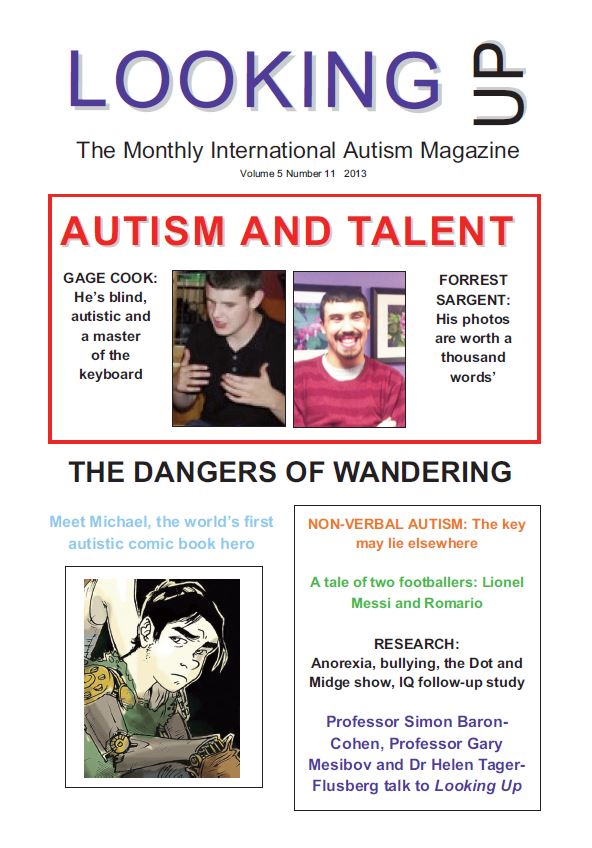
|
| ||||||||||||||
| PRINT EDITION BACK ISSUE CONTENTS AND FRONT COVERS | ||||||||||||||||||||||||||
|---|---|---|---|---|---|---|---|---|---|---|---|---|---|---|---|---|---|---|---|---|---|---|---|---|---|---|
| VOLUME 1, Number: | 1 | 2 | 3 | 4 | 5 | 6 | 7 | 8 | 9 | 10 | 11 | 12 | VOLUME 2, Number: | 1 | 2 | 3 | 4 | 5 | 6 | 7 | 8 | 9 | 10 | 11 | 12 | |
| VOLUME 3, Number: | 1 | 2 | 3 | 4 | 5 | 6 | 7 | 8 | 9 | 10 | 11 | 12 | VOLUME 4, Number: | 1 | 2 | 3 | 4 | 5 | 6 | 7 | 8 | 9 | 10 | 11 | 12 | |
| VOLUME 5, Number: | 1 | 2 | 3 | 4 | 5 | 6 | 7 | 8 | ||||||||||||||||||
| You can find our PDF EDITION CONTENTS AND COVERS on our PDF EDITION BACK ISSUES PAGE | ||||||||||||||||||||||||||
| Home page | Subscribe (print edition) | Selected articles | Our publications | Our mailing lists |
| PDF edition | Subscribe (PDF edition) | Back issue contents | Autism books | Contact us |